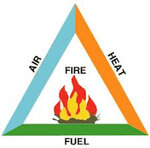tgotwalt1158
Junior Member level 1

check now, I have edited the link!
Follow along with the video below to see how to install our site as a web app on your home screen.
Note: This feature may not be available in some browsers.



My friend I think that you mix this sensor with some other, this sensor cannot be used for fuel measuring :
**broken link removed**
**broken link removed**
This sensor with fuel can give us astronaut farmer without rocket. :wink:
"Astronaut Farmer" 2006 movie.











The least expensive method is a pressure transmitter installed in a tee just below the tank (likely in the drain valve connection) that reads in Inches, Water Gage. You just have to post a conversion chart telling volume in gallons/liters whatever relative to the gage output. OR- if you have a functional code writer, you can convert the Inches, WC to Inches of Oil, if all you want is to know how full the tank is.Thanks for the answers, but actually I was looking for some cheaper solutions...
the sonix 40, which is the cheaper solution from them, is selled for more than 800$!!

Elvan121 do you have insurance of your property where is that tank located ?
Some my thinking is, if you want to be safe buy some certified, tested and dedicated sensor for this purpose, dont play with this, this is last thing with which you want to play in your house yard.
Consult some company in your local for this, just consult.
Electrostatic electricity can be very dangerous. You cant use any sensor for your above ground tank. Fuel tank should be under ground because many things.
We need you on this forum, we dont need Elvan astronaut.

He wants to use it with diesel fuel. That fuel is very stable ... you can put burning cigarette in fuel and nothing will happensElectrostatic electricity can be very dangerous.

He wants to use it with diesel fuel. That fuel is very stable ... you can put burning cigarette in fuel and nothing will happens

It happen because of vapour of diesel! Why your friend was waiting for 2 min?We take one bottle of diesel about 2 litres, and we spilled on the grass around few m² area. My friend enter in that field after minute two, and throw burning cigarette on grass. :lol:



Not exactly. There's a fundamental property called flash point. At a temperature below the flash point, the vapour can't be ignited and in particular no explosion can take place. But the liquid can be be ignited if you do it in the right way. A liquid that's been sprayed in the air or spilled e.g. on dry grass can be perfectly ignited and burn in an explosive flame.It happen because of vapour of diesel! Why your friend was waiting for 2 min?


Ps: the dependency between the oil level vs. output frequency will probably not be linear, but if the dependency caracteristic has a proportional sector you can work on that part of the caracteristic by modifying any system parameter .. Whatever if this does not help or the linear sector of the transfer caracteristic does not cover the oil level range of the tank, than you can use a microcontroller to measure the frequency of the oscilator and calculate oil level. By using a microcontroller you can send data to a PC by RS232, usb or by using radio transceiver modules ....I sugest to consider the following idea:
The capacity of two paralel plates is C = e x (S/d) , where e is the dielectrical permitivity, S is the surface of the paralel plates and d is the distance between them.
Since air dielectrical permitivity differs from oil dielectrical permitivity, the capacity of the plates (disposed in your tank) will vary with the oil level. If you integrate this capacitor () in a oscilator circuit, you get a variable frequency oscillator wich will modify it's frequency with oil level. After you obtain (calculate,experimental way, ... or whatewer way) the dependency betveen the oil level vs. output frequency, you can use any frequency measuring method you like to get oil level or you can further convert the signal in voltage and than measure it with any ADC ...........
If you are using a metal tank you alredy have a half of the capacitor .....
Just an idea .
